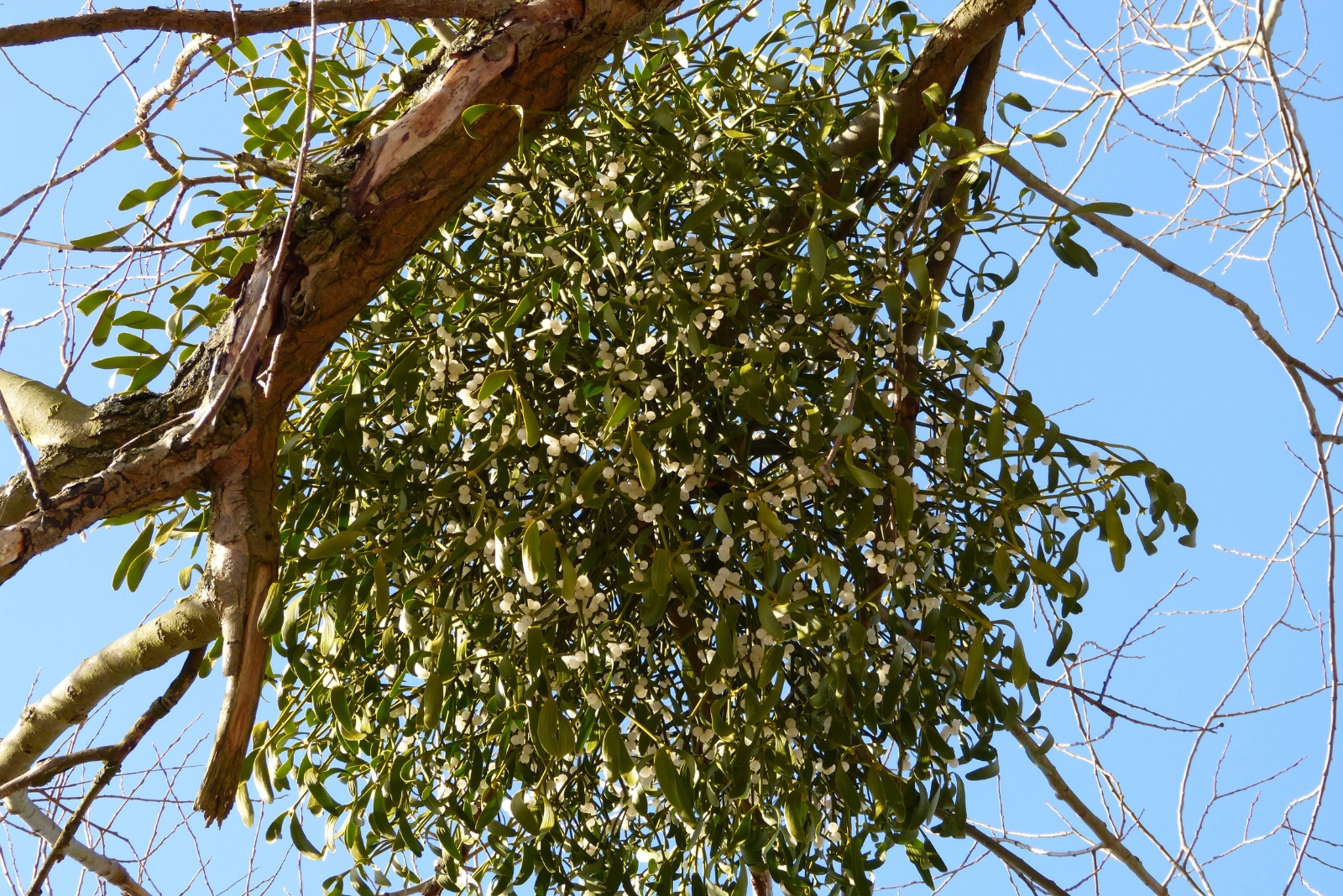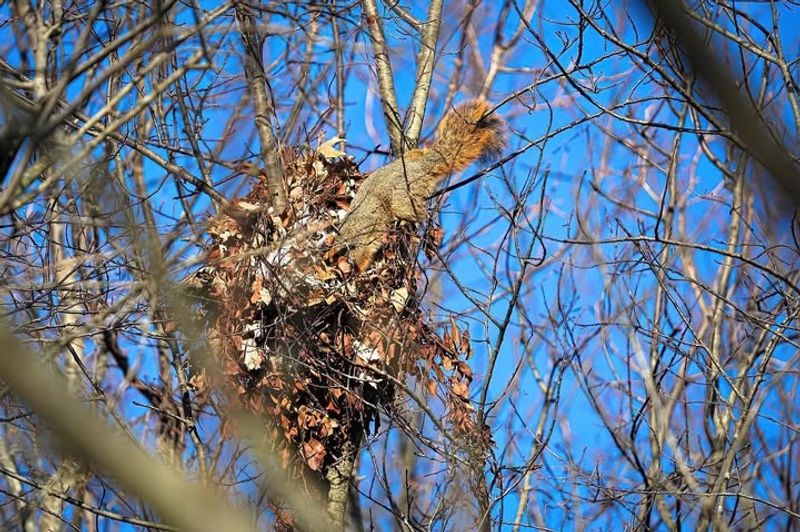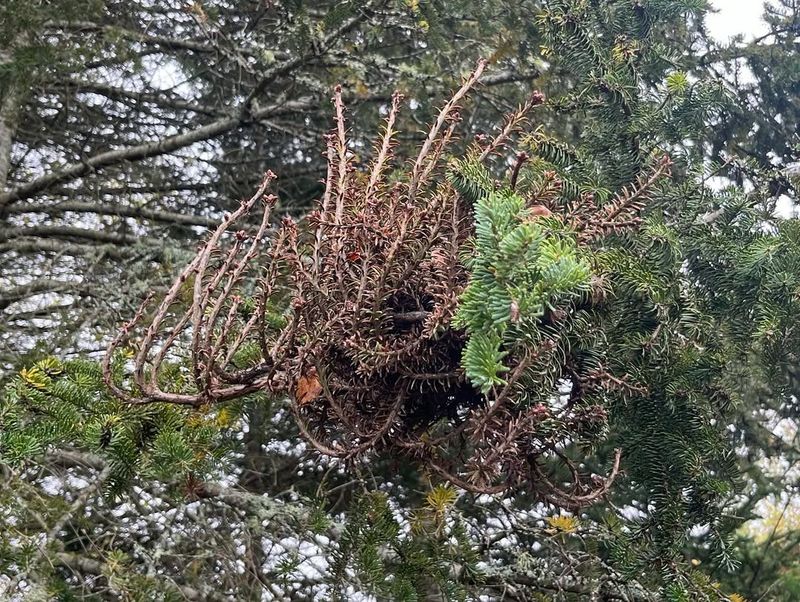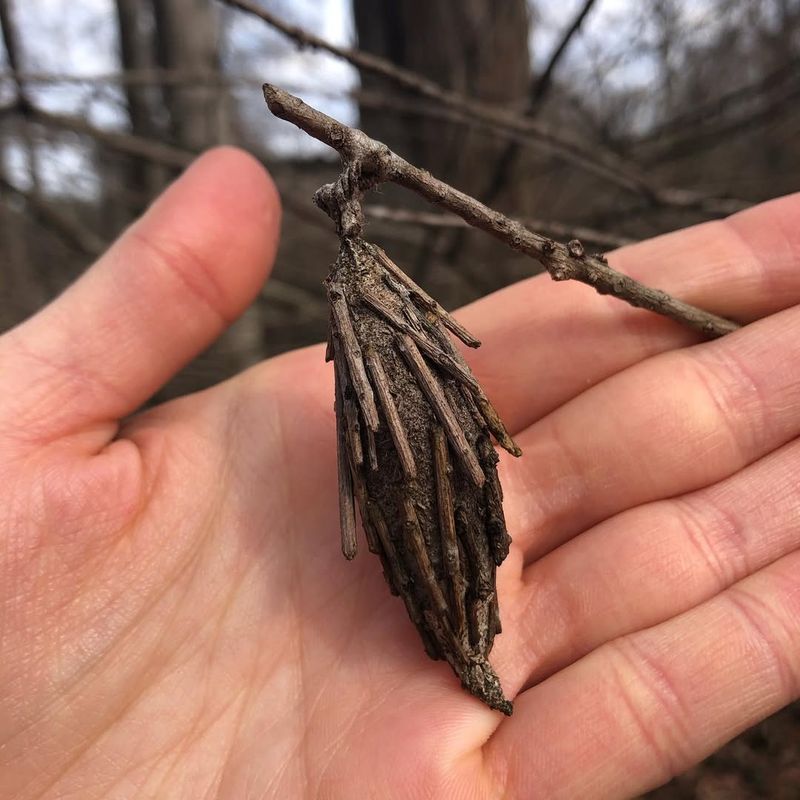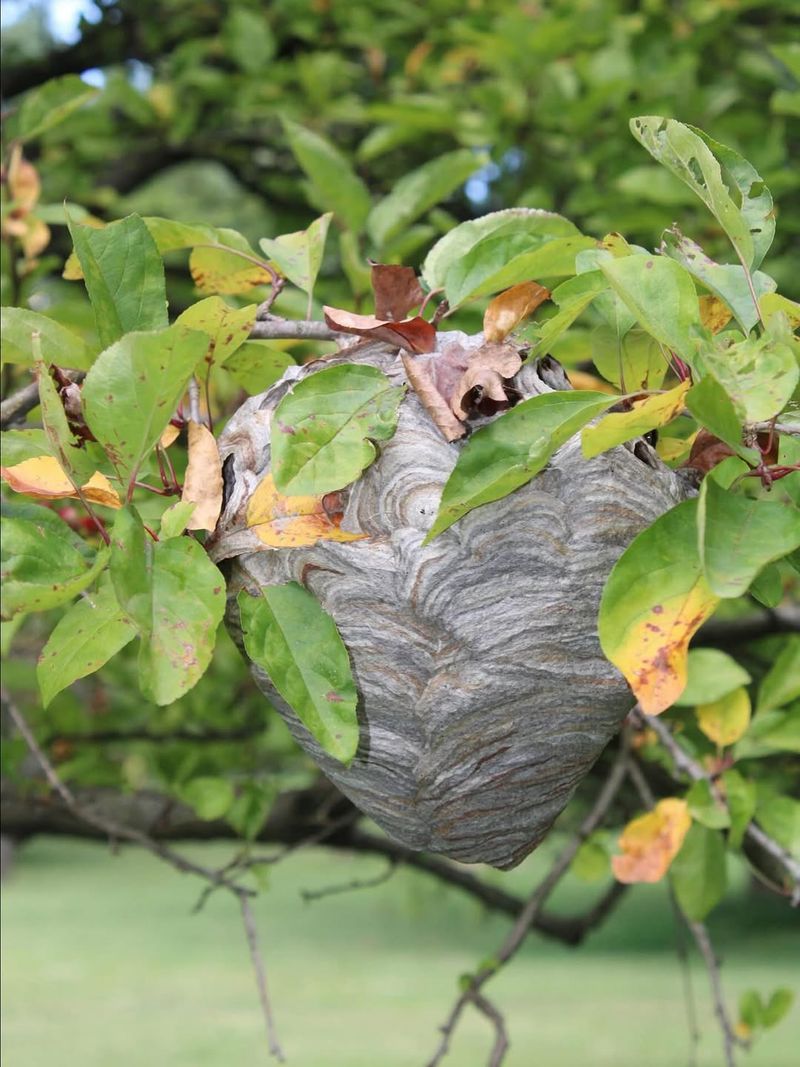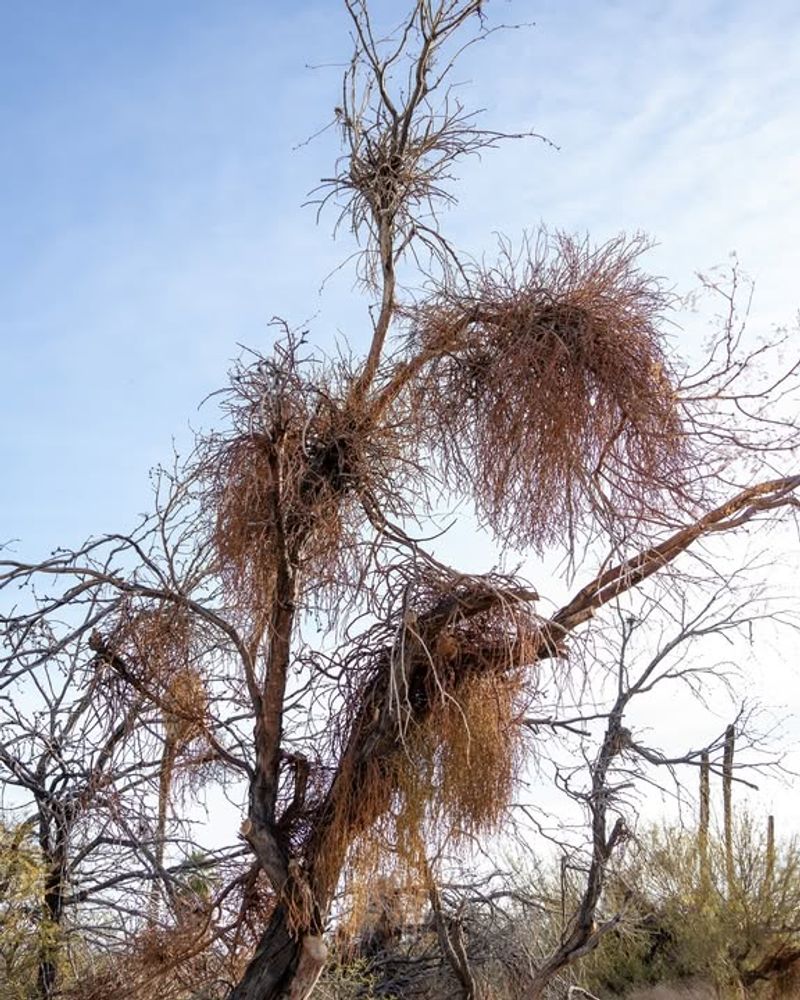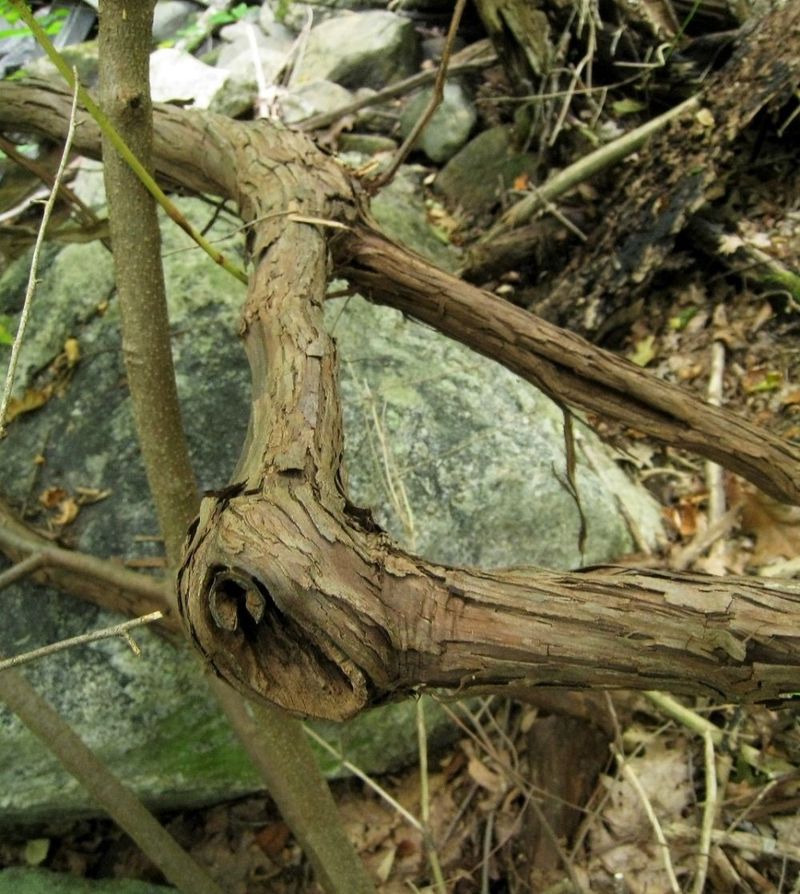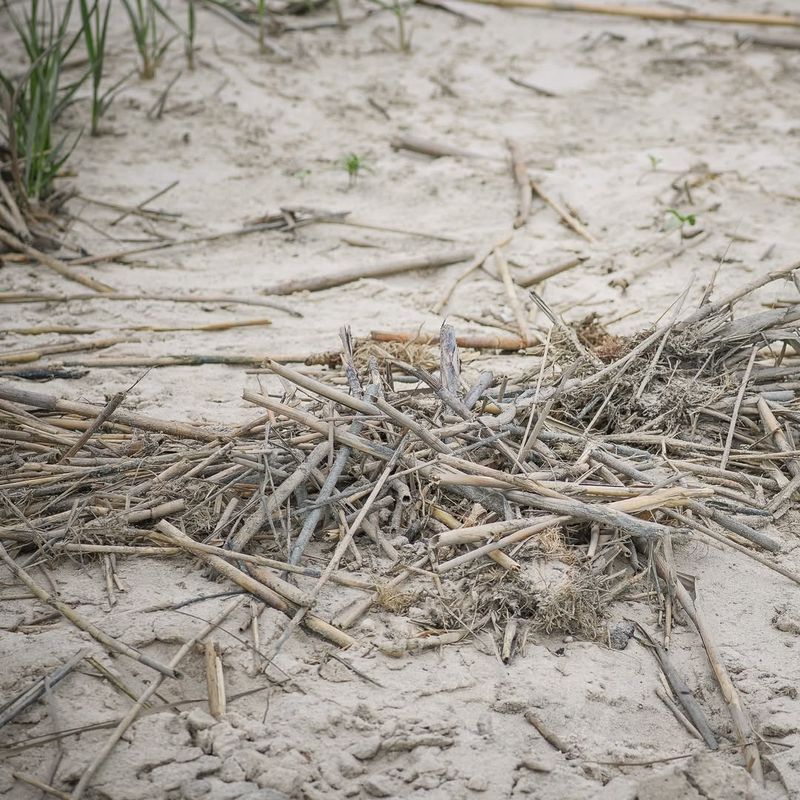If you’ve spotted a clump high in your Indiana tree and assumed it’s just a bird’s nest, think twice. Not everything perched in the branches is home to chirping chicks.
That tangled mass might be hiding a surprising secret — and knowing the difference could save your trees from real trouble.
1. Squirrel Dreys
Squirrels build cozy homes called dreys that often fool people into thinking they’re bird nests. Made from twigs, leaves, and moss, these structures sit wedged between branches and look surprisingly similar to large bird nests.
Gray and fox squirrels are common in Indiana and construct dreys for raising their young and staying warm during winter. You’ll notice dreys tend to be rounder and fuller than most bird nests, with a denser appearance.
If you see activity around the structure during fall or winter, it’s likely a squirrel home rather than a bird nest.
2. Witches’ Broom Disease
Sometimes what appears to be a nest is actually a strange plant disease called witches’ broom. This condition causes abnormal growth patterns where dozens of small branches sprout from one spot, creating a tangled, nest-like mass.
Fungi, viruses, or tiny insects called mites trigger this odd growth. The bunched branches look especially nest-like during winter when leaves fall and expose the dense twig clusters.
Witches’ broom won’t harm your entire tree usually, but it does create unusual shapes that catch your eye from below.
3. Bagworm Colonies
Bagworms create protective cases from silk and bits of the host tree that can cluster together and resemble small nests. Each bagworm larva builds its own spindle-shaped bag, but when many gather on one branch, they form a clumped appearance.
These pests are particularly troublesome for evergreens and can seriously damage Indiana trees if left unchecked. The bags hang from branches and may look like a messy collection of pine cones or a miniature nest.
Spotting them early helps prevent tree damage and keeps your landscape healthy throughout the growing season.
4. Bald-Faced Hornet Nests
Bald-faced hornets construct large, gray, papery nests that might catch your attention high in tree branches. These aerial nests can grow as large as basketballs and feature distinctive gray layers made from chewed wood fibers mixed with saliva.
While they somewhat resemble oversized bird nests from a distance, their smooth, rounded shape and gray color give them away upon closer inspection. These hornets are beneficial predators that eat other insects, but they defend their nests aggressively.
Always keep your distance if you spot one of these impressive structures in your Indiana tree during spring through fall months.
5. Mistletoe Clumps
Mistletoe grows as a parasitic plant on tree branches and creates dense, bushy clumps that people often mistake for bird nests. This evergreen plant stays green year-round, making it especially noticeable during winter when surrounding leaves have fallen.
In Indiana, mistletoe typically infects hardwood trees like oak and maple. The plant sends roots into the tree branch to steal water and nutrients, which can weaken the host over time.
Those romantic holiday sprigs come from these very clumps, though they’re not so romantic for the trees hosting them throughout the year.
6. Abandoned Vine Tangles
Wild grapevines and other climbing plants create tangled masses in tree canopies that perfectly mimic abandoned nests. When these vines grow unchecked, they loop and twist around branches, forming rounded clusters of woody stems and dried tendrils.
Indiana’s forests have plenty of wild grapes, Virginia creeper, and poison ivy that climb high into trees. During winter, these dried vine tangles become especially prominent and nest-like in appearance.
Property owners sometimes worry these are active nests, but they’re just aggressive plants that need management to protect tree health and structure.
7. Leaf And Debris Accumulation
Strong winds and natural branch formations can trap leaves, twigs, and other debris in tree crotches, creating convincing nest lookalikes. Unlike actual nests, these accumulations lack the structured weaving and cup shape that birds carefully construct.
After storms or during autumn leaf drop, these debris piles can build up quickly in the forks of branches. They’re completely harmless to your tree and actually provide shelter for small insects and spiders.
Over time, rain and wind will naturally break down these collections, though some stubborn piles might stick around for multiple seasons before finally dispersing.

